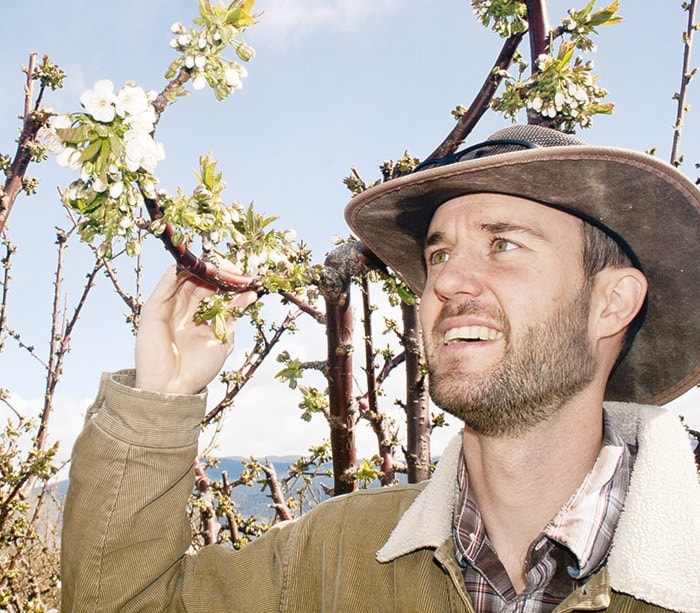When Steve Brown, a Summerland orchardist, noticed blossoms on fruit trees in late March, he was surprised by the timing.
Normally, the first blossoms in Summerland and the surrounding area appear on apricot trees in mid-April, according to information from the provincial Ministry of Agriculture.
“This is the earliest blossom we’ve ever had,” Brown said.
Last year, apricot blossoms began to appear on April 8 and were in full blossom April 15 to 16. Peaches were in the full blossom stage on April 22.
He added that the effects of the early blossom dates are not known.
The biggest risks come if the recent warm, mild weather is followed by a cold snap.
Such conditions in Ontario resulted in a loss of 70 per cent of the fruit crops in some areas.
According to Farmwest.com, a B.C.-based information resource site for farmers, the number of growing degree days so far this year is significantly higher than normal.
From Jan. 1 to April 6, Summerland had 407.7 growing degree days, more than double the 54-year average of 201.85 degree days.
Growing degree days are a weather-based indicator, measuring heat accumulation. The measurement is used to predict plant and pesticide development rates.
The early blossoms do not necessarily mean the fruit harvest will be early this year, Brown said.
If the temperatures cool down following the blossoms, the harvest dates would be close to normal.
Cooler spring temperatures could have an effect in other ways, he said. Since bees tend to fly less in cooler weather, pollination could suffer, resulting in smaller than average fruit sizes.
Brown has been tracking blossom dates and said while this year is unusual, the blossoms are appearing earlier on average than they did 10 to 15 years ago.
Warmer conditions have affected fruit crops elsewhere as well.
Brown said recently the peach crop in California suffered because the winter temperatures were not cold enough there. Peaches require some cold winter temperatures in order for the trees to produce well.
Richard MacDonald, an orchardist in Summerland, has tracked fruit blossom dates for the past 30 years. He said the first blossoms occasionally occur in late March, but more often show in April.
Early blossoms can be a problem if the temperature drops.
“Anything below freezing is a problem,” he said.
During sunny days in early spring, daytime temperatures can be warm, but clear nights are often cool.
While this year’s blossoms are appearing earlier than usual, MacDonald said the blossom dates have been changing.
From 1936 to 1986, McIntosh apple trees blossomed around May 10.
Since that time, the date has shifted earlier until today the McIntosh apples blossom in late April.
“Generally speaking, the blossom has been getting earlier for the last 20 years,” he said.
The early blossom dates mean the fruit will ripen earlier.
For apple growers, this means picking fruit in August, not September.
The fruit is still excellent quality, but the changing dates have affected farming.
Denise MacDonald said the early blossoms this year could be affected by spring frosts.
“We still have six weeks until we’re out of danger,” she said.
